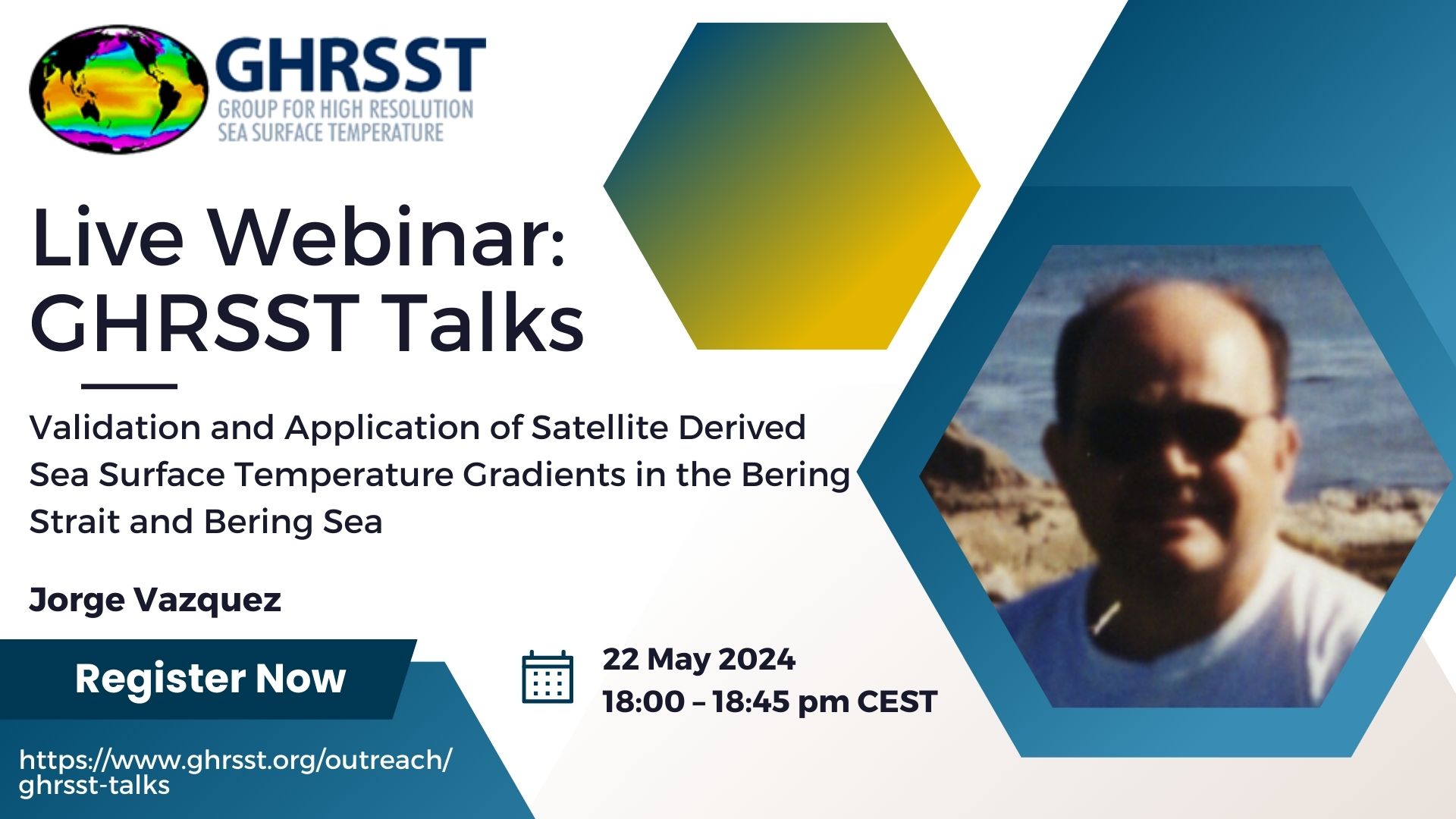Please join us for this GHRSST Talk with Jorge Vazquez on Validation and Application of Satellite Derived Sea Surface Temperature Gradients in the Bering Strait and Bering Sea
Authors: Jorge Vazquez-Cuervo, Rachel M. Spratt, José Gómez-Valdés, Michael Steele, Marisol Garcia-Reyes, David S. Wethey
Abstract
The Arctic is one of the most important regions of the world’s oceans for understanding the impacts of a changing climate. Yet, it is also difficult to measure because of extreme weather, as well as ice conditions. In this work we directly compare four data sets from the Group for High Resolution Sea Surface Temperature (GHRSST) with a NASA Saildrone deployment along the Alaskan Coast and the Bering Sea and Bering Strait. The four data sets used were the Remote Sensing Systems Microwave Infrared Optimally Interpolated (MWIR) Product, the Canadian Meteorological Center (CMC) product, the Daily Optimally Interpolated Product (DOISST) and the Operational Sea Surface Temperature and Ice Analysis (OSTIA) product.
Gradients were derived for both the Saildrone deployment and the GHRSST products, with the GHRSST products collocated with the Saildrone deployment. Overall, statistics indicate that the OSTIA product had the best correlation of 0.79 and a root mean square difference of 0.11C/km when compared with Saildrone. Differences increased at latitudes > 65N were sea ice would have a greater impact. A trend analysis was then performed on the gradient fields. Overall positive trends in gradients occurred in areas along the coastal regions. A negative trend occurred at approximately 60N. A major result of the study indicates that future work needs to revolve around the impact of changing ice conditions on SST gradients.
About Jorge
Dr. Jorge Vazquez is a Research Scientist at NASA Jet Propulsion Laboratory/California Institute of Technology where he is part of the Project Science Team for the Physical Oceanography Distributed Active Archive Center (PO.DAAC). He holds a Bachelor of Science in Physics from the University of Miami, Master of Science in Physical Oceanography from the University of Rhode Island, and a PhD in Geological Sciences from the University of Southern California. He has a background as a research scientist focusing on the application of Remote Sensing in Earth Science. His research interest and expertise fall within the application of Remote Sensing to Coastal Regions and the Arctic.
Dr. Jorge Vazquez is a long-standing member of the GHRSST Community. He has been involved since the very beginning of GHRSST, through being active in sea surface temperature derived from satellites. GHRSST thus became the perfect way to create an international group focused on SST derivation and applications using satellites. As a science team member since the creation of GHRSST, Dr. Jorge has been a key part of the team behind the formulation of data interoperbaility standards. These contributions stand out as a key benefit that he has gained, stating that, “GHRSST has really set the standard for interoperbaility of data. This has now expanded in all different ways to other data sets and now to the cloud transition”. Dr. Jorge says he has also benefitted from the collaboration and coordinating distribution of GHRSST data and understanding data distribution and management issues.
Watch the recording here

